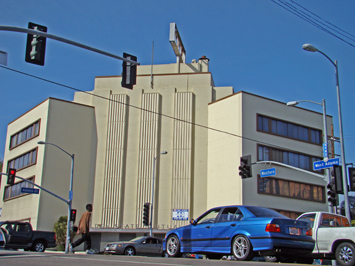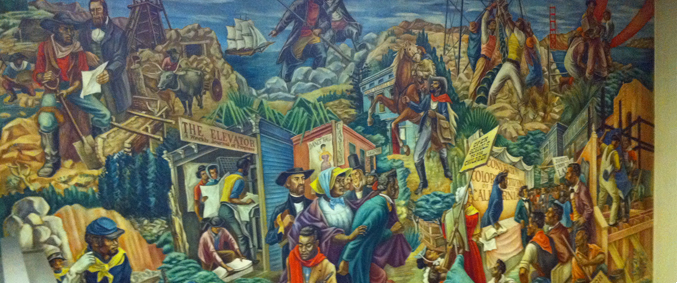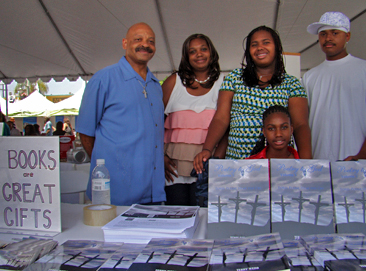
When Terry Webb penned some 800 poems decades ago, amidst a life of drugs and crime, his publishing plans didn’t extend beyond mailing them home from prison.
“During that time I would write, and I would send them to my mother,” said Webb, a Watts resident who now works as a security guard and substance abuse counselor. “God has opened the door for me to now put this material out.”
Webb was one of more than 200 authors and artists featured at the fifth annual Leimert Park Village Book Fair on Saturday, an all-day event of literary stage performances, panel discussions, readings, workshops and vendors. More than 5,000 guests strolled through the fair among such presenters as Pulitzer Prize-winner Isabel Wilkerson and former Essence Magazine editor-in-chief Susan L. Taylor.
“We were waiting and praying to get into the book fair,” said Webb, who missed the deadline to apply for a booth and was told that he might get a spot if he showed up ready to go. “We didn’t think we’d get in.”
Hours before the fair opened, Webb waited—and prayed—with his family alongside copies of his debut book, “Poetry to God, Volume I: Lord, Please Hear the Cry,” a collection of 208 poems. Eventually, he was invited to share a booth with another author, and within an hour, he had made a sale.
“What I hope to get out of this is exposure,” said Webb. “Knowing that I’ve touched the hearts and lives of anyone who’s come in contact with this book is enough.”
In February, Webb self-published his book through Trafford Publishing and has sold about half of the 300 printed copies. It is also available electronically through Amazon and Barnes & Noble, and he has three more volumes in the works.
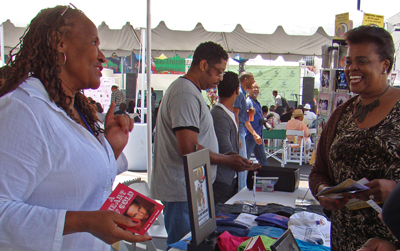
“I think the selling part is a bonus behind it,” said Eric Brasley, an event volunteer and founder of Books of Soul, a promotional website for African American literature. “The real piece I think is just being able to share your work and interact with other people.”
Some new authors have become regulars at the book fair, such as Wilma Blair-Reed, who has attended since 2007. A retired social worker, Blair-Reed said her biggest goal is to connect with readers through life lessons.
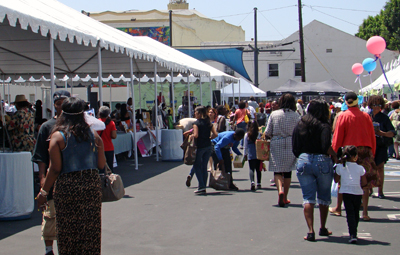
“There’s a purpose to my writing besides entertainment,” said Blair-Reed. “Of course you have to have entertainment in there. I love to do my little page-turning things,” she said about the plot in “The Color of Hate,” a murder-mystery set in the 1960s that deals with racism, adultery and other real-life inspired challenges.
Now on her third book, Blair-Reed says all of her writing contains a simple message: “Life happens. What you get out of it, it’s typically up to you.”
Photos by Lisa Rau









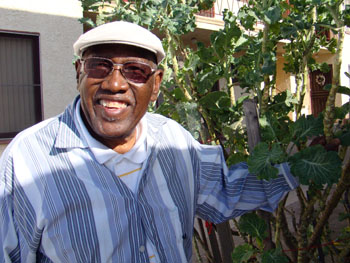
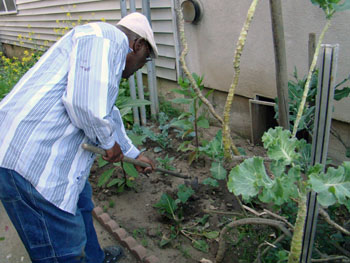 Scroggins and his Queen Street neighbors considered the idea of a community garden for years, although the nearby park was a challenge because of its rundown facilities. In March, they got their chance: Queen Park received a makeover with new playground equipment from KaBOOM!, a Disney-sponsored nonprofit that creates playgrounds in low-income residential areas.
Scroggins and his Queen Street neighbors considered the idea of a community garden for years, although the nearby park was a challenge because of its rundown facilities. In March, they got their chance: Queen Park received a makeover with new playground equipment from KaBOOM!, a Disney-sponsored nonprofit that creates playgrounds in low-income residential areas. 
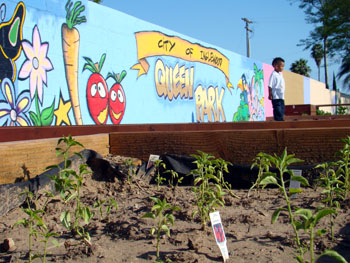
 When Golden State Mutual Life Insurance went bankrupt in 2009, the historic building that had housed the West Adams firm since 1949 was seized by state regulators and slated for liquidation of all assets.
When Golden State Mutual Life Insurance went bankrupt in 2009, the historic building that had housed the West Adams firm since 1949 was seized by state regulators and slated for liquidation of all assets.